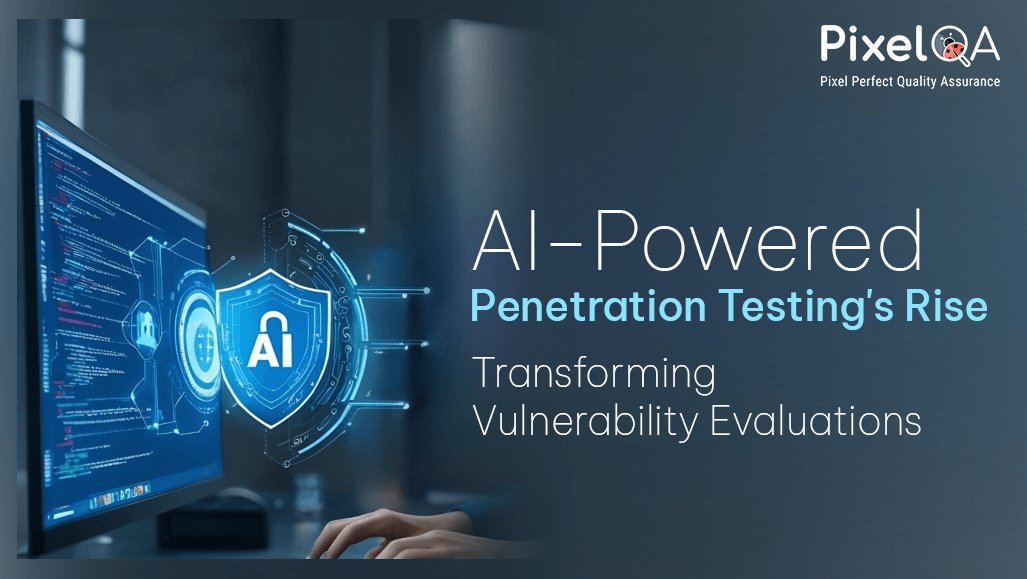
Introduction
Staying one step ahead of programmers and malicious hackers is a constant challenge in cybersecurity. Traditional methods of security penetration testing often struggle to keep pace with the speed and sophistication of modern cyberattacks in an ever-changing threat landscape. Emerging AI intrusion testing technologies are changing the cybersecurity landscape, making the processes of identifying vulnerabilities and securing infrastructures both more efficient and cost-effective, especially for businesses leveraging advanced Penetration Testing Services.
This article is going to discuss how artificial intelligence is reinventing the entire system of security penetration testing, how it changes the approach towards vulnerability assessment, and what ways companies can take advantage of AI in improving the cybersecurity environment.
Table of Contents
- Penetration testing: what is it?
- The Traditional Approach to Penetration Testing
- Enter AI-Powered Penetration Testing
- Benefits of AI in Penetration Testing
- How AI Enhances Vulnerability Assessments
- Real-World Examples of AI-Powered Penetration Testing Tools
- Penetration Testing's Future: Automation and Beyond
- Conclusion
Penetration testing: what is it?
Penetration testing, sometimes known as ethical hacking, is a type of simulated cyberattack intended to find weaknesses in a system or network. It is the issue that it is necessary to have ruthless bushwhackers take advantage of. Security experts, using their different sets of tools and techniques for penetration testing, try to compromise the networks, systems, and places in the same way as a hacker.
Penetration testing is very important for discovering security violations before they are used by a malicious hacker. it employs automatic as well as manual testing styles for identification of various security vulnerabilities, ranging from old software and weak passwords to more complicated cases such as misconfigured firewalls and exposed gateways.
The Traditional Approach to Penetration Testing
Penetration testing has long been carried out manually by certified security experts using a mix of automated technologies and instinct. To find security flaws and evaluate an association's ability to prevent them, these testers act as attackers.
Manual penetration testing has many drawbacks despite its great effectiveness.
- Time-Consuming: It can take a long time to conduct manual testing, particularly on large, complex networks or systems.
- Limited Scope: An average tester may miss out on complex or hidden vulnerabilities because they can only cover a particular number of scripts in a certain amount of time.
- Resource-Intensive: Penetration testing requires a significant financial investment from security forces, which not many businesses can afford.
The demand for faster, more efficient methods is pushing the abandonment of AI-powered outcomes, even though traditional penetration testing is still an essential component of cybersecurity.
Enter AI-Powered Penetration Testing
Artificial Intelligence has matured in Cybersecurity, and it is changing the face of how security experts conduct vulnerability assessments through penetration testing. Compared to traditional ways, AI-based penetration testing solutions are faster and more direct in attack simulation, vulnerability analysis, and flaw-finding, using ML algorithms.
By automating many of the formerly tough activities, artificial intelligence is transforming penetration testing. Large amounts of data can be tested by computerized models, which can then relate patterns that mortal testers might not find particularly troubling. Over time, the effectiveness of AI-driven technologies in identifying vulnerabilities decreases as they continuously learn from new attack paths and errors.
Benefits of AI in Penetration Testing
1. Speed and Efficiency
The speed at which AI-powered penetration testing can function is one of its biggest benefits. Artificial intelligence (AI) tools can automatically overlook and evaluate critical systems more quickly than human testers. This implies that vulnerabilities can be connected and updated in a fraction of the time required for custom styles.
AI-powered solutions are also capable of operating around all the time, continuously checking systems for vulnerabilities without requiring pauses or downtime. Security brigades can quickly detect implicit issues and act before an assault because of this position of robotization.
2. Better Coverage
More thorough surveys of broader environments can be conducted by AI-powered security testing services than by a human tester. Large amounts of data from various sources, including operations, networks, bias, and endpoints, can be broken down by machine literacy algorithms to find vulnerabilities that could otherwise go unnoticed. With the use of this improved content, associations can better spot potential dangers.
3. Smarter Vulnerability Detection
AI systems are made to improve and learn over time. These tools get more adept at identifying patterns and connecting implicit weaknesses when they are exposed to new dangers and attack methods. This constant literacy guarantees that AI-powered penetration security testing systems remain current with the latest attack techniques and are capable of identifying even the most complex traps.
4. Reduced Human Error
Manual penetration testing is largely dependent on the human spirit, and although experts are extremely valuable, they are not able to make mistakes. Missed vulnerabilities might result from intellectual signals, fatigue, and oversight. On the other hand, AI-powered tools can further provide balanced results and prevent fatal errors. Naturally, testers can focus on more complex aspects of the security evaluation by automating repetitive processes.
5. Cost-Effective
In the long run, AI-based penetration testing remedies might be cheaper alternatives, despite needing an upfront investment. Organizations can save on security assessments by decreasing the time and resources dedicated to in-house testing. Moreover, the efficacy of the AI tools in identifying and rectifying vulnerabilities would enable security teams to better avert the probability of very costly data breaches or system compromises.
How AI Enhances Vulnerability Assessments
An essential component of every association's security plan is vulnerability assessment. Businesses can proactively solve implicit issues before they become significant security pitfalls by linking signs in systems, networks, and processes. Standard vulnerability assessments rely on manual or automated evaluations, but AI-powered technologies go one step further by thoroughly analyzing vulnerabilities.
In a manner that traditional tools cannot, AI-driven technologies can analyze intricate systems and settings and search for weaknesses. For example, AI can spot configuration crimes or logical errors in operation law that traditional testing methods would overlook. Additionally, it may replicate a variety of attack scripts to evaluate a system's ability to withstand real-world threats.
AI can evaluate vulnerabilities with regard to their possible impact and thus aid the security operators in attending to only the critical matters first. Thus, it complements the smarter utility of funds, which together means better security for the organization.
Real-World Examples of AI-Powered Penetration Testing Tools
Several AI-powered penetration testing tools are now seeing tremendous growth in the cybersecurity space. The most noteworthy gadgets are:
- Cobalt Strike: Security experts use this well-liked AI-powered tool to simulate sophisticated threats and evaluate how well security solutions are working.
- Darktrace: Darktrace, a cybersecurity tool known for its machine literacy-based capabilities, can identify and address cyber threats on its own, keeping organizations one step ahead of bushwhackers.
- UpGuard: This platform prioritizes risks based on their indicated effects on the business by using AI to scan for vulnerabilities across several platforms.
These tools show how AI can transform vulnerability assessments and penetration testing, enabling organizations to more easily find and address security flaws before hackers can take advantage of them.
Penetration Testing's Future: Automation and Beyond
Further automation is the way of the future for penetration testing, with AI becoming less and less important. We should expect increasingly advanced and efficient systems that can manage increasingly complex security routines as AI develops further.
With incident response systems and trouble intelligence platforms, AI-driven tools will most likely be better integrated with other cybersecurity technology. A further faultless and automatic method of identifying, addressing, and calming security flaws will result from this combination.
The human spirit will continue to be a crucial component of penetration testing even with the advancements in AI. Security warriors will continue to benefit from AI-powered solutions that automate routine duties and provide more intelligent vulnerability evaluations, but human testers will still be needed to manage complex, high-risk scripts and evaluate AI-generated results.
Conclusion
The advent of penetration testing driven by AI is revolutionizing the cybersecurity industry. A software testing company can leverage AI solutions to help associations find and fix vulnerabilities faster, more effectively, and more directly than ever before by automating critical components of vulnerability assessments and penetration security testing.
AI is an invaluable tool in the battle against cyber dangers because of its capacity for constant learning and adaptation. Although AI-driven technologies can never completely replace mortal moxie, they do assist security professionals stay ahead of changing dangers by complementing classic penetration testing approaches.
Businesses should adopt AI-powered penetration testing and security testing services as AI continues to revolutionize cybersecurity to improve their security posture and protect their essential assets from ever-increasing cyber threats.
About Author

Rushi Mistry is a Security Tester at PixelQA with a focus on cybersecurity. He is passionate about IoT penetration testing and is working towards obtaining a CISSP certification, with the ultimate goal of becoming a Chief Information Security Officer (CISO).

_638693472679036091.png)